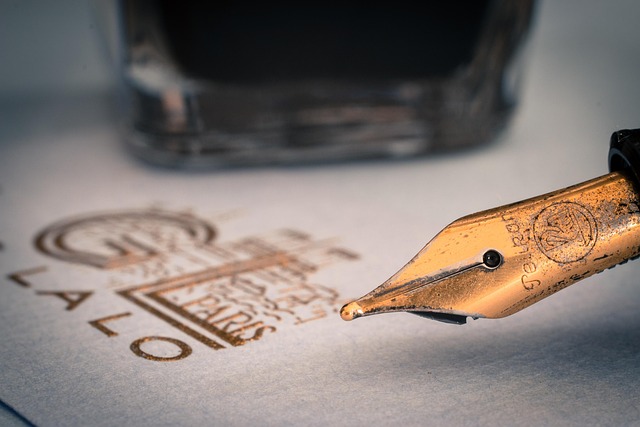Facial fillers, such as hyaluronic acid, collagen, calcium hydroxylapatite, or poly-L-lactic acid (PLLA), are injectable substances that enhance facial features by adding volume and reshaping contours. Popular for their natural occurrence and moisture retention properties, these fillers integrate into the skin, providing immediate results that can last from several months to years. Chin augmentation fillers, specifically using hyaluronic acid, offer a non-surgical solution to define and contour the chin and jawline, with minimal recovery time. The procedure is quick (15-30 minutes), comfortable, and most patients experience only mild discomfort. Results vary but can last 6-18 months, depending on filler type. Regular touch-ups are needed to maintain aesthetic effects. Choosing the right filler type based on individual preferences, skin type, and desired outcomes is crucial for optimal outcomes. Safety measures, including choosing a reputable clinic and certified provider, are essential to mitigate temporary side effects and rare but serious risks.
“Discover the transformative power of chin augmentation fillers—a popular aesthetic procedure for enhancing facial profiles. This comprehensive guide unravels the science behind these innovative treatments, offering insights into their benefits and applications. From understanding the different types of facial fillers to navigating the recovery process, we demystify the procedure.
Explore real patient results, learn about longevity, and gain clarity on safety concerns. Whether you’re considering chin augmentation or simply curious about facial fillers, this article provides an in-depth look at what to expect, empowering you with knowledge in the world of aesthetic enhancements.”
Understanding Facial Fillers: A Comprehensive Overview

Facial fillers, a key component in cosmetic enhancement, are injectable substances that add volume and reshape facial features. They work by filling in depressions or contours to improve overall facial symmetry and definition. These fillers can be made from various materials, most commonly hyaluronic acid, collagen, calcium hydroxylapatite, or poly-L-lactic acid (PLLA). Hyaluronic acid fillers, in particular, are popular due to their natural occurrence in the body and ability to attract and retain moisture.
Understanding how facial fillers function involves grasping their interaction with the body’s natural processes. After injection, these substances integrate into the skin, providing immediate results that can last anywhere from several months to years, depending on the specific filler type and individual factors like metabolism and lifestyle. Regular touch-up sessions may be necessary to maintain the desired aesthetic effect, making it an ongoing process that requires informed decision-making and consultation with a qualified professional.
The Science Behind Chin Augmentation Fillers

The science behind chin augmentation fillers involves a simple yet powerful concept: using injectable substances to enhance and sculpt facial features. These fillers, composed of hyaluronic acid or similar materials, are strategically injected into the chin area to add volume and definition. This process stimulates collagen production, further improving skin elasticity and maintaining the new contour over time.
Unlike surgical procedures, chin augmentation fillers offer a non-invasive approach, making them an attractive option for those seeking subtle yet effective enhancements. The procedure is quick, with minimal downtime, allowing individuals to resume their daily activities promptly. This accessibility and effectiveness have made facial fillers, including those used for chin augmentation, a popular choice in the cosmetic industry.
Benefits and Applications: Enhancing Your Facial Profile

Chin augmentation fillers offer a non-surgical approach to enhancing facial features, particularly focusing on defining and contouring the chin and jawline. This procedure has gained popularity due to its ability to provide immediate results, allowing individuals to achieve their desired facial profile. By injecting specialized facial fillers into specific areas, practitioners can add volume and projection to the chin, creating a more balanced and harmonious facial esthetics.
The applications of chin augmentation fillers are diverse. Many individuals seek this treatment to correct asymmetries, improve the appearance of a receding chin, or simply enhance their overall facial balance. It can also be beneficial for those who have experienced age-related volume loss in the jawline or want to achieve a more defined look. With careful placement, these fillers can subtly transform one’s facial structure, boosting confidence and enhancing overall attractiveness.
Choosing the Right Filler for Chin Augmentation

When considering chin augmentation fillers, it’s crucial to understand that different fillers cater to various needs and preferences. The right filler for an individual should align with their skin type, desired outcome, and overall facial harmony. Hyaluronic acid-based fillers are a popular choice due to their natural composition and ability to attract water, enhancing volume and defining the chin contour. These fillers offer immediate results and are suitable for those seeking a subtle yet noticeable enhancement.
On the other hand, non-hyaluronic acid fillers, such as collagen or calcium hydroxylapatite, provide longer-lasting effects but may require more time to achieve desired results. These options are ideal for patients aiming for more significant structural changes. It’s essential to consult with a qualified professional who can assess your specific requirements and guide you in choosing the facial filler that best suits your needs, ensuring natural-looking and satisfying chin augmentation.
Procedure and Recovery Process: What to Expect

The chin augmentation filler procedure is typically quick and non-invasive, taking around 15 to 30 minutes. During the treatment, a qualified healthcare provider will inject a small amount of facial fillers into specific points along your chin, enhancing its contour and definition. These fillers are made from hyaluronic acid, a natural substance that adds volume and improves skin elasticity. The process is usually well-tolerated, with only mild discomfort reported by most patients.
Recovery is swift and minimal. You may experience some redness or swelling immediately after the procedure, but these typically subside within a day or two. Patients can return to their regular activities right away, though it’s recommended to avoid strenuous exercise or physical activities for 24 hours. It’s important to remember that results vary from person to person, and you should discuss your expectations with your healthcare provider before the treatment.
Common Misconceptions About Chin Filler Treatments

Many individuals seeking chin augmentation fillers hold misconceptions about the procedure, often stemming from misinformation prevalent online. One widespread myth is that facial fillers are only for those wanting drastic changes; however, this couldn’t be further from the truth. Fillers can enhance natural features, providing subtle yet effective results. The notion that it’s a painful process is another common misconception. Modern techniques and advanced products have made filler treatments more comfortable, often with minimal discomfort.
Another misconception is that chin fillers are solely cosmetic procedures. In reality, they can address underlying structural issues, improving facial balance and confidence. Unlike surgical procedures, non-invasive filler treatments offer quicker results, making them a popular choice for those wanting immediate improvements without the recovery time associated with surgery.
Real Patient Results: Before and After Stories

When considering facial fillers, it’s essential to see real patient results to understand their potential. Before and after stories offer a tangible look at how these treatments can enhance facial features. Many patients experience significant improvements in their chin contouring, leading to more balanced and defined facial structures.
These outcomes are achieved through the strategic placement of fillers, which add volume and definition to the desired areas. By enhancing the chin, facial fillers can contribute to an overall youthful appearance, correcting asymmetries and boosting self-confidence. Browse through these real patient experiences to gain a clearer picture of what’s possible with chin augmentation fillers.
Longevity and Maintenance: How Long Do Results Last?

The longevity of results from chin augmentation fillers varies depending on several factors, including the type of filler used and individual healing processes. On average, facial fillers can last between 6 to 18 months. High-quality, longer-lasting fillers are now available, offering extended periods of enhanced definition and contouring.
Regular touch-up sessions are often necessary to maintain the desired results. Skilled injectors can optimize filler placement during maintenance treatments, ensuring longevity and minimizing discomfort. Staying informed about aftercare instructions, including avoiding strenuous activities and certain medications, will also contribute to prolonged results and overall facial harmony.
Safety and Side Effects: Addressing Your Concerns

Chin augmentation fillers, like any cosmetic procedure, come with considerations regarding safety and potential side effects. It’s crucial to understand that while facial fillers are generally regarded as safe when administered by a qualified professional, they’re not without risks. Some common temporary side effects include redness, swelling, and mild discomfort at the injection site, which usually subside within a few days.
More seriously, there’s a risk of infection, bleeding, or an allergic reaction, although these are rare. It’s important to choose a reputable clinic and certified provider who follows strict hygiene protocols to mitigate these risks. Before undergoing any procedure, open communication with your provider about safety measures, expectations, and potential outcomes is essential, ensuring you’re well-informed and at ease with the process.
